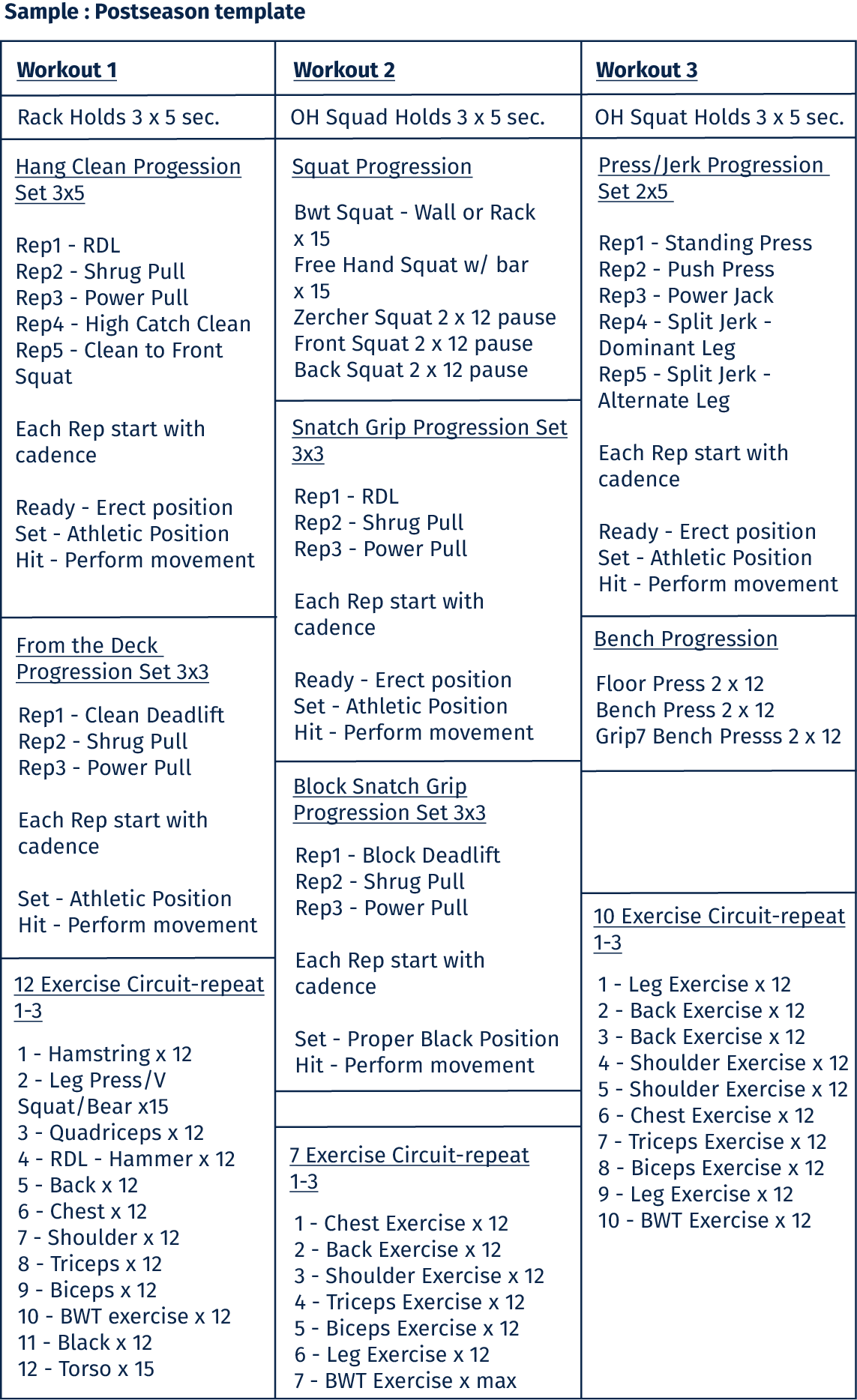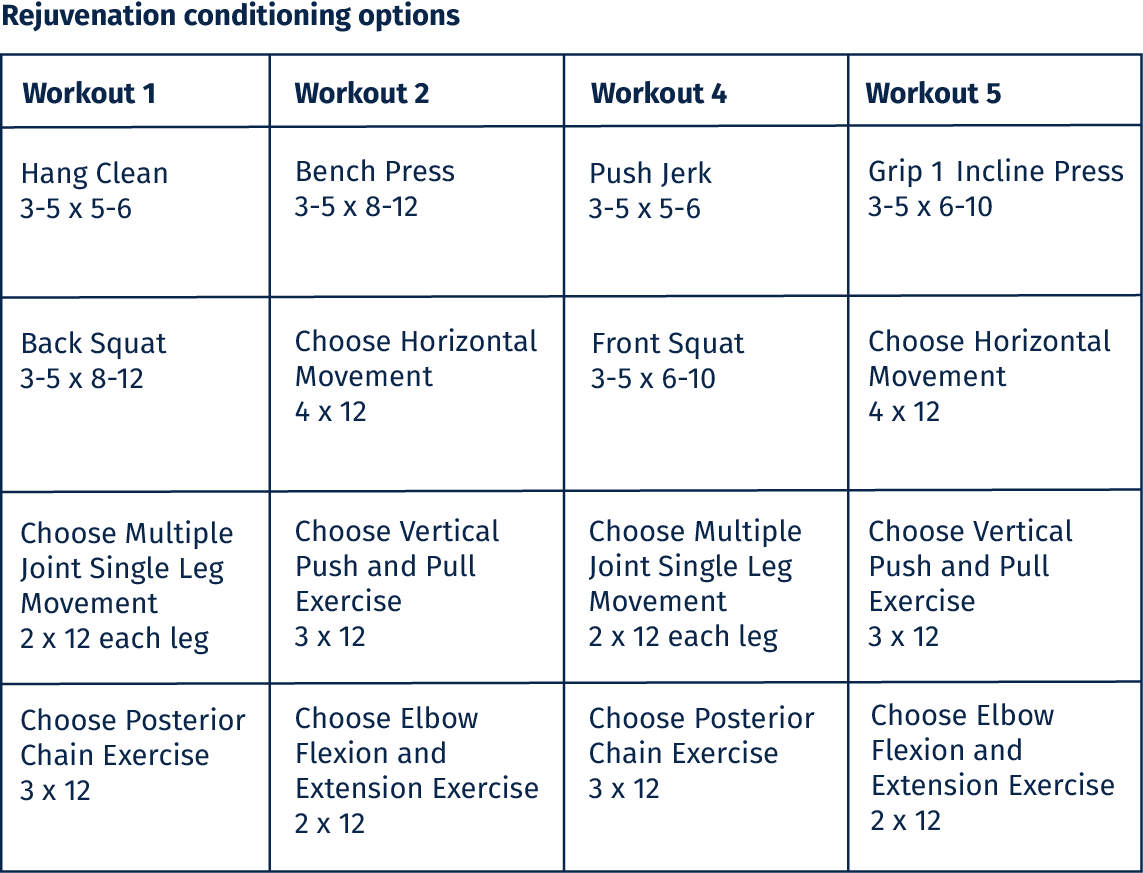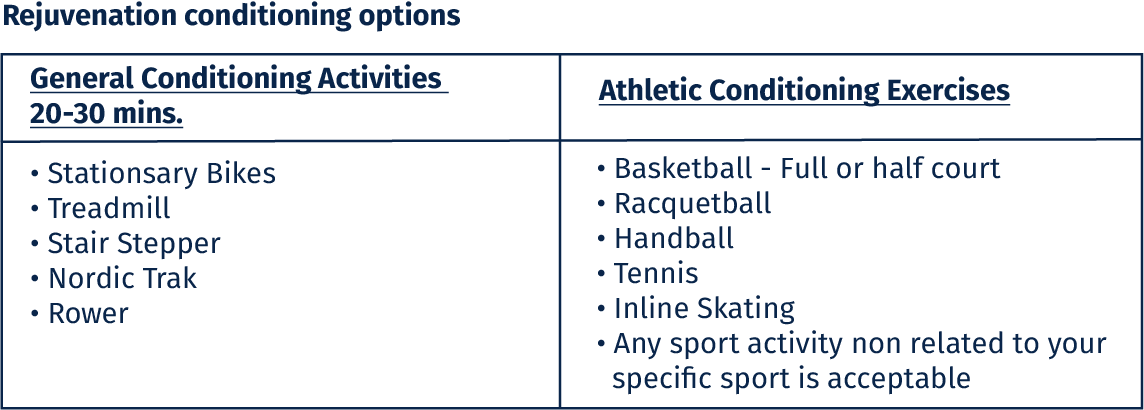Developing an Annual Strength Training Plan
Posted by Joe Kenn on Sep 20th 2019
An annual strength plan is unique to each sport.
A frequently asked question I get from many football coaches is when does the year begin? Some believe the annual plan starts when the school year starts and ends when school lets out for the summer. Some think it starts Jan. 1 and ends Dec. 31. Others believe it starts when competitions begin.
These all seem to be logical answers but they also are all incorrect.
When to begin?
The annual plan is based specifically on the sport for which the program is being designed, beginning the day after the last competition of the previous season and ending the day of the last competition of the upcoming season.
This schedule allows for a gradual increase in an athlete’s development from one program phase to the next without unnecessary breaks that would hinder improved performance.
Uncontrollable factors
Before an annual plan can be developed for a specific sport, there are several factors that need to be considered with regard to designing the actual running programs and strength program cycles. A list of uncontrollable factors must be created.
Uncontrollable factors are anything a coach cannot manipulate when designing the plan, leading to the need to adjust strength training programs and cycles. Most of these factors relate to specific dates that fall within the academic calendar.
Examples of uncontrollable factors include:
- Type of school year: semester or quarters
- School holidays
- Length of semester or quarter breaks
- Fall break
- Spring break
- Examination schedule at the end of semesters and quarters
- When does the semester or quarter begin?
- Length of season
- Is it a split-semester season?
- Does the sport include practice in the precompetitive phase?
- Does the sport implement a spring or fall schedule for practice?
- Does your team qualify for the playoffs, and how long does it last?
- Are there any early season or midseason tournaments you play in?
- Student-athlete discretionary time
These factors can alter any program or cycle.
For example, hypothetically, a coach creates an eight-week cycle for a sport with Week 8 being a test week. Unfortunately for the coach, Week 8 also falls during spring break, and students will not be in school for that week. Therefore, the coach in charge of the testing cannot perform his evaluation at that time and must adjust not only the evaluation week but also the eight-week program and the remaining schedule of the annual plan.
Stages
There are three main stages that should be implemented into the annual plan: rejuvenation, developmental and competitive.

Within these three stages, specific programs can be developed based on the time periods determined during the 52-week training plan. Each stage and subsequent program has goals and objectives that are established to enhance the athletes’ performance for the most important competition schedule of their sport.
The rejuvenation phase
This stage begins the day after the last competition of the previous year. The duration typically is between two and eight weeks. A shorter stage is generally a byproduct of a longer competitive stage. In most team sports, this stage varies in length because some teams have longer or shorter postseason runs, resulting in different dates to set the new competitive year.
During this stage, it is important to maintain a general level of fitness while also giving athletes the time to psychologically and biologically rest, relax and regenerate. This objective is accomplished by implementing training strategies that are atypical to the specific characteristics of the developmental and competitive stages of the program.
The rejuvenation stage is the ideal time to begin intense rehabilitation of injuries that may have occurred during the year’s competitions. In these cases, individuals will have a program designed specifically for developing strength in the injured area, enabling the athlete to be at or near 100 percent health for the developmental stage that follows.
The rejuvenation stage can be broken down into two programs: postseason and offseason. Depending on the length of the rejuvenation stage, the postseason program may not be included. When both programs are implemented, it is best to divide the number of weeks equally for each program. If this phase has an odd number of weeks, give the extra week to the offseason program, because that is more conducive to the training that will occur during the developmental and competitive stages.
If the athletes are away from campus during this stage, you must account for it when developing the exercise plans. They may not have the same equipment at home as they do at their school’s facility.
The coach’s involvement during this stage is minimal. After reviewing your athletes’ techniques for performing the foundational exercises and introducing any new exercises, you feel free to roam the workout floor to help address any safety or spotting concerns.
This is the only time during the annual plan where athletes focus on individual body parts, rather than on movement patterns related to strength development. Athletes should be encouraged to experiment with different training apparatuses for a more multidimensional training effect. Doing so will give them the opportunity to train their bodies differently than with their typical training programs.
The postseason program
Depending on the length of the rejuvenation stage, the postseason program may not be implemented. If the rejuvenation stage is four weeks or longer, the postseason program will be the initial training program of the annual plan. If the rejuvenation stage is shorter, this program is omitted.

Strength training during this program is broken down into three sessions per week coming every other day. There are two parts to each session: an exercise technique section followed by traditional circuit training (body parts). The exercise technique section involves performing each of the primary exercises in a precise manner as well as the introduction of any new exercises that will be included in the developmental stage.
The traditional circuit program features a series of exercises, each of which corresponds to a specific body part, and the number of reps to be completed for each exercise. Athletes can choose any exercise that represents the body part movement. Three circuits of the exercises should be performed during the week: a short circuit (six to nine exercises), a moderate circuit (nine to 12 exercises) and a long circuit (12 to 15 exercises).
Training percentages are not affixed to any exercise during the circuit training program. Athletes should choose a load that allows them to perform each rep with proper technique. They should be able to finish one to two reps after the goal rep is achieved.
The offseason program
The offseason program is always be a part of the annual plan. The length of the rejuvenation stage will determine if this is the first or second program of the training year.

During this program, athletes train on a four-day split with Day 1 and Day 4 being lower body emphasis workouts while Day 2 and Day 5 are upper body emphasis workouts. Days 3, 6 and 7 are recovery days.
A total-body exercise should be included in the lower-body sessions and should be performed as the first exercise of the daily rotation. Athletes still have the ability to make exercise choices in some cases, but the program is more conducive to the programs of the developmental stage. This program should not include training percentages. Instead, it should have set/rep schemes assigned to each exercise.
The rejuvenation stage
During the rejuvenation stage, conditioning is primarily aerobic and athletic in nature

Athletes have the choice of two different categories of conditioning sessions: general conditioning activities or athletic conditioning exercises.
Aerobic activities are considered general conditioning activities. Such activities include long-distance jogging, stair climbing, stationary bike riding, stationary rowing and treadmill work. This workout should last between 20 and 30 minutes.
